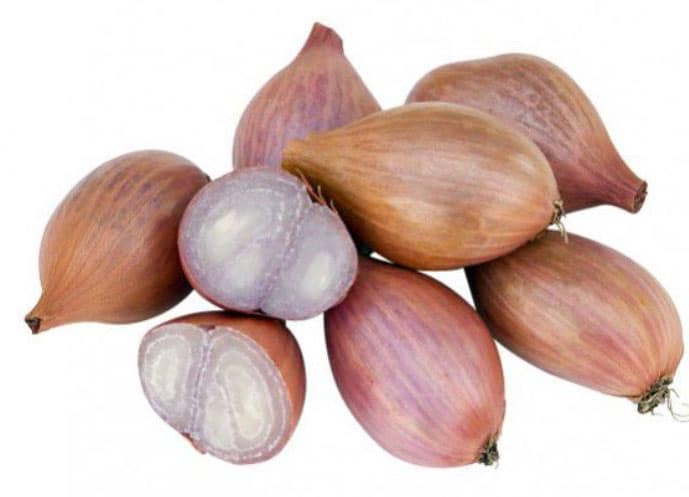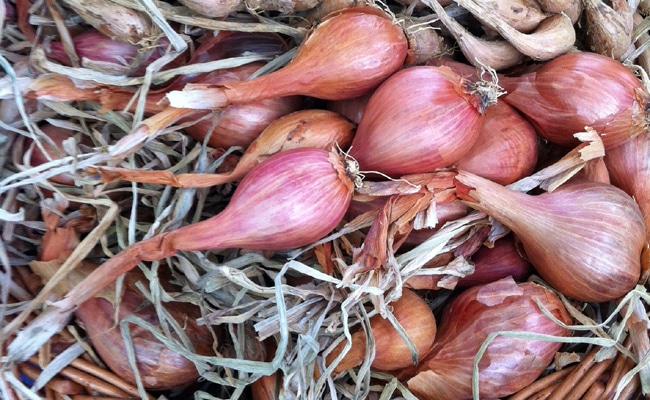The shallot is very appreciated by the French and it is also difficult to dissociate from our gastronomy. It is very close to the onion, but it is distinguished by the production of multiple bulbs while the onion has only one. Its flavor is also finer and more marked, it is an indispensable condiment in the garden. It forms a tuft of 20 to 30 cm of hollow and cylindrical leaves.
When to sow shallots?
The planting of the clays varies according to the varieties. Concerning the common shallot: the cloves are planted between October and January, for the other varieties between February and March.
To note : the south of France, you can plant in October and November.
Which varieties to choose?
Shallots are classified into three main types which are then divided into several groups:
- The pink shallot : it appeared in France in the nineteenth century and since then it is the most cultivated. It is also known as Jersey shallot, but is native to Russia or Finland. In this type we find three varieties long, half-long and round. Most often, you make your choice according to the planting moments: autumn, winter or spring.
- The long it has an elongated and regular bulb with a coppery yellow hue. Its flesh is quite colorful and its flavor is fine and marked. It is earlier than the half-long and in some areas, more temperate, you can plant it in autumn.
- The half-long : its bulb has a more rounded shape, it is rather red or coppery pink and has a sweet and pleasant flavor. It will usually be planted from January to mid-April, because it is later than the long.
- Round It is less common and is mainly grown in eastern France. It is also clearer than the other two and has a light flavor and sweet scent. His flesh is white.
- Gray shallot: it is one of the first to have been cultivated in France. It has an arched and long bulb, its skin is thick and strong and is rather gray while its pink flesh is slightly purple. It has a fairly pronounced flavor and is more readily grown in eastern France and the south. It stays between 6 and 7 months and it crashes in autumn. It is particularly suitable for winter growing, but does not support heavy soils that are too wet for it.
- Dutch shallotit is round and reddish or yellow in color.
Read also : The échalion: not to be confused with the shallot
The different species of shallot long roses

- The Longor It has long, very regular bulbs, coppery skin and slightly purplish flesh. Most of the time it is planted in the spring or autumn in the south. It will be watered if the spring is dry and it is an early variety.
- The Jermor : its skin is coppery, but its pink flesh, an early variety, very easy to cultivate, it is planted at the same time as the Longor. It is well preserved and has a very good yield.
The different species of half shallot pink shallots
- The Mikor : its flesh is white pink, its skin is coppery pink, you plant it in the spring or between January and April or between October and April depending on the region. It is a late variety that has a very good yield. It is perfectly preserved and has a very pronounced flavor. Its characteristic: its bulb is pear-shaped.
- The Melkior : its skin is dark and coppery and its flesh is very purplish, it is a late variety which is planted in the spring. It has a good yield and is resistant to diseases such as late blight. It keeps well.
- The Arvro : it has pink flesh and its skin is reddish brown. It offers a good yield and it has real qualities of conservation. It is an early variety that is planted in the spring.
Round shallots species
- The Rondeline his skin is coppery and his flesh is pink. Its yield is very good as is its conservation. It is planted in the spring and it is an early variety.
- The Red Sun : it has a pink skin, it is a late round shallot which presents a significant yield and a very good conservation. She has very great taste qualities.
Gray shallot:
- The GriselleAs its name suggests, its skin is gray and its white flesh is purple and its bulb is very small. Its planting is done in autumn, it is not very sensitive to diseases and very rich in dry matter. It can be kept moderately well and its yield is low. On the other hand, it has an excellent delicate flavor that harmonizes perfectly with the oyster.
Shallot hybrid:
- The Grisor: it results from a cross between the pink shallot and the Griselle, it presents a purplish flesh and a coppery gray tunic. It is an early variety, whose planting is done in spring or autumn in the south of France. It keeps well enough and its yield is good.
What to do before sowing the shallots?
Before planting your shallots, prepare the soil by digging it properly to loosen it. It must be done carefully so that your plantations grow properly. You will not have to bring compost, manure or fertilizer. This operation to loosen the soil takes place from late February to early March.
How to sow them?

When planting the bulbs, iron the rake or fang. If the soil is wet, bring the soil back to you and make small mounds 10 to 15 cm high. In this way the bulbs will not be in contact with moisture which will prevent them from rotting.
When placing your bulbs in the ground, observe a spacing of 15 cm between the plants and 20 to 30 cm between the lines. We must also pay attention to the direction of the bulbs, it should be planted head up and put it to 2 cm deep, the tip arriving flush with the ground.
Cover the furrows with a thin layer of soil and put about 40 to 50 clays per square meter. If you plant in autumn, the duration of the crop will be 8 to 10 months against 5 to 6 months for a planting in late winter.
Crop rotation : The shallot is a crop that is not very draining for the soil, but it is still better to rotate for 3 to 4 years. It is recommended to put it where you have previously grown fruiting vegetables. In the year following the cultivation of the shallot, make rather vegetable crops seeds such as peas or beans. Instead, avoid leek, onion and garlic.
Next to the shallot, you can plant tomatoes, strawberries, beets and lettuce.
Where to plant shallots?
The shallot appreciates good fertile garden soil, well drained and loose: sandy and light. It is afraid of humidity, it is for this reason that it is often planted on a hill that is also called ridon, especially if the soil is heavy and therefore humid. In this case, the planting will be done rather in spring, avoid the autumn more humid.
She also likes warmth and sunshine.
How to maintain them?
It is a plant that requires very little care, but at the beginning, you have to hoe regularly to avoid competition from weeds that would prevent it from developing properly.
If the season turns rainy, it will be necessary to clear the foot of the ground a month before the harvest.
How to water shallots?
You will not water your shallots unless the weather is dry and very long.
Harvesting shallots: when and how?
You will harvest your shallots at different times of the year following your planting. It must be done when the foliage is dry, and the weather is sunny and dry. You will then leave them for 48 hours on the ground to dry.
To preserve them, they must be placed in a ventilated, dry and frost-free place, without peeling them, the skin being their protective envelope.
Diseases of the shallot and what to do?
The main enemy of the shallot is moisture that can very easily cause rotting. Planting them on mounds avoids this problem since the water evacuates more easily. The shallot bulbs should be monitored especially during warm humid periods. The bulb rot and mildew on the foliage are the biggest enemies of shallots. If despite the mounds, the foot is reached, remove the diseased plants and spray with Bordeaux mixture. To protect your plants, you can spray them once every 15 days with a horsetail decoction.
Among the other diseases likely to reach your shallots, the fly onion which attacks the bulbs, makes yellowing and weakens the plants is also a fairly frequent attack. You can easily spot maggots that grow around the roots and bulbs that break down. To control the fly, act preventively, respecting crop rotation for at least 3 years.
We must also pay attention from the month of June to the attacks of onion leaf beetle. You spot them thanks to the leaves gnawed in long strips. It is then necessary to pick up the adult insects under and on the leaves, you will recognize it easily: it has a red carapace and red and black legs.
Sclerotinia: If your shallots are affected, you must pull the diseased plants and destroy them, do not put them especially in compost. Those who are poorly affected will be cut off and then sprayed with a horsetail decoction.
The last disease is the white rotit stops the growth of the plant, causes the leaves to yellow and eventually dry and collapse. To avoid this, the best solution is not to bury the bulbs too much.
Even more plantations:









